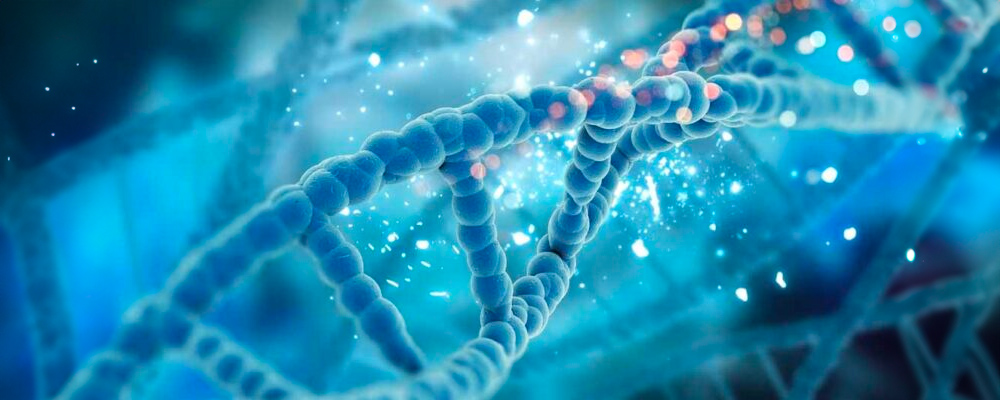
Epigenome Sciences
Epigenome sciences aim to explain the fundamental principles of epigenome organization and function that enable eukaryotic organisms to execute DNA instructions encoded in their genomes to maintain homeostasis, grow, replicate, differentiate cell-specific functions, and respond to changing environments. The science of the epigenome is vitally important to human biology and has a broad reach throughout the life and medical sciences.
Recent faculty recruitments to Johns Hopkins University sparked an interdisciplinary revolution in our understanding of epigenome activities at the level of single molecules and single cells. Because of these recruitments, Hopkins is uniquely positioned to tackle questions in structural and functional epigenomics with a multidisciplinary approach that builds upon existing strengths in epigenetics, stem cell biology, single-molecule biophysics and structural biology.
Led by Hopkins faculty who are international leaders in the field of epigenomics and chromatin biology, the Epigenome Sciences cluster builds upon the collaborative research community of scientists from across the university by recruiting pioneers in the interdisciplinary fields of study vital to learning more about the epigenome.
Our investment
This cluster’s investment in research includes: 5 Bloomberg Distinguished Professorships and 5 junior faculty positions. These faculty, along with the cluster leads, will collaborate together along with existing Johns Hopkins faculty on this important area of research.
Interested in this cluster? Contact us or visit the Epigenome Cluster website.
At the scale of single proteins and protein domains, we envision recruitment of BDPs who represent the leading edge of pioneering fundamental research on molecular condensates and phase transitions, a critical new area of clear and present interest, not only for the epigenomics consortium, but for the entire biosciences community which stands to benefit enormously from their presence at Johns Hopkins.
The primary challenge to understanding genome and epigenome functions in health and disease is the nested hierarchy of scales, spanning single molecules, cells, tissues and organs in size and complexity, and picoseconds to decades in time. To overcome this challenge, we need to understand the structure, dynamics, and function at each level and integrate across these levels.
The cluster seeks to recruit researchers with proven track records of bridging different disciplines, across different scales, between tool development and application and who will synergize with the current Johns Hopkins epigenome researchers with leading positions in biophysics, biochemistry, cell biology, molecular genetics and oncology.
The proposed BDP cluster recruits will bring expertise in:
- Large scale chromatin folding, chromosome domains and sub-nuclear chromatin regions
- Genome maintenance via replication and repair
- Cryo-electron microscopy, tomography and correlative imaging technologies
- Biomolecular condensates and phase separation
- Computational epigenomics
As an institution, Johns Hopkins has demonstrated strengths in molecular genetics, cell and molecular biology, biophysics and structural biology of genome metabolism studied at a resolution of one to hundreds of DNA base pairs, but representation is less developed at larger organizational scales of thousands to millions of base pairs that involve higher order chromatin folding, chromosome domains, and subnuclear chromatin regions.
The cluster scientists will add expertise in these larger organizational scales; they will allow for a cross-fertilization of ideas and technologies and an eventual merger into a continuum of mechanistic structures, pathways, and theoretical models with predictive power to fully describe how the information encoded in genome and epigenome is managed effectively from birth to death.
Research on these areas conducted by new BDPs will be highly complementary to numerous faculty researchers throughout the Hopkins epigenomics community. Likewise, the institution is well represented in areas of gene transcription and chromatin remodeling but less so in the biochemistry and molecular biology of DNA replication and DNA repair. The recruitment of BDPs in genome maintenance will fill this crucial gap and interface with structural biology approaches as well as the in vitro and live-cell, single-molecule dynamics technologies developed by Hopkins researchers.
At the scale of macromolecular complexes, the institution is outstanding in traditional methods of crystallography and has transitioned to cryo-electron microscopy technologies. To complement these strengths, recruitment of established young investigators in cryo-electron microscopy and cryo-electron tomography will forge the future of macromolecular and subcellular structural biology at JHU. These candidates are potential collaborators for every subfield of epigenomics.